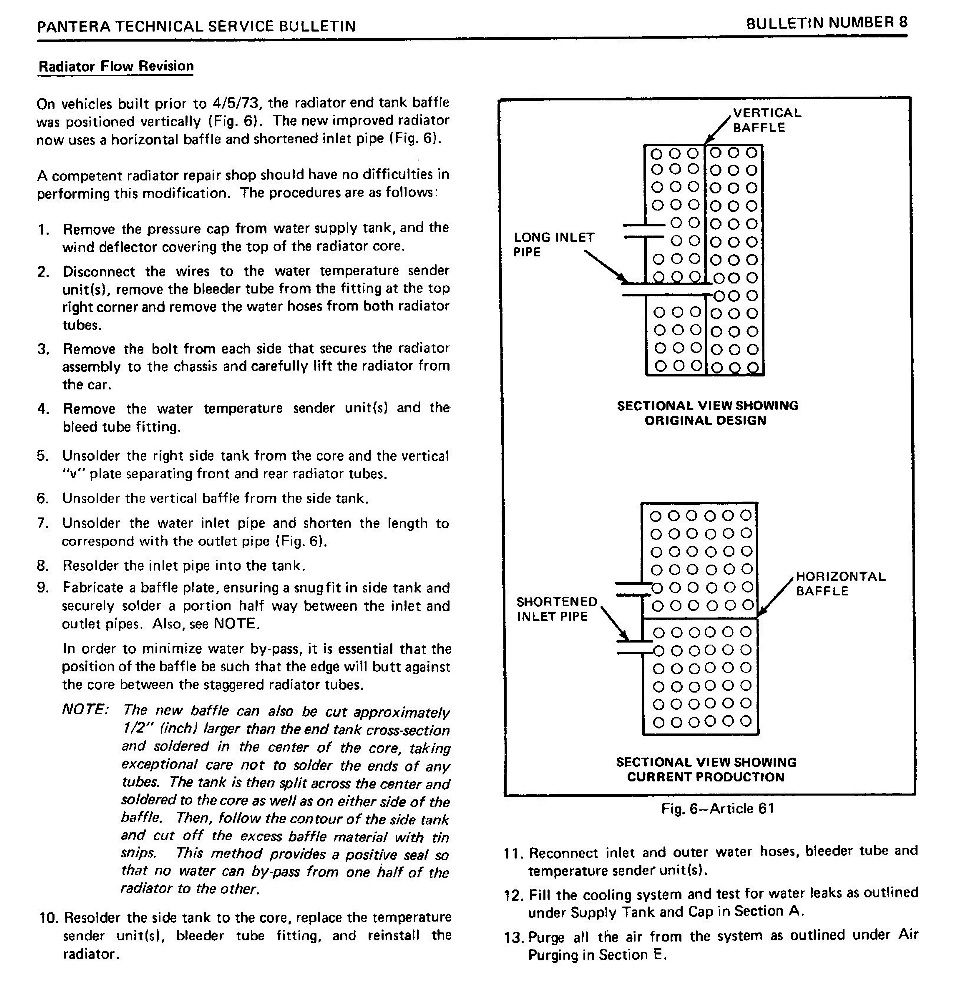quote:
Originally posted by Belgiumbarry:
Peter,
without baffles the water can take all the tubes across the radiator.So from the in-collector to the out collector.(In heat exchanger terms that's called cross-flow.)
Now for better heat exchange, as for example,more water velocity inside those tubes, one can use baffles ( dividing plates ) to force the water trough some tubes and returning in another number.For example a 2 pass , which has 1 baffle in the in-collector , water takes 1/2 amount tubes , returns in the opposite collector trough the other 1/2 amount and out the same side as "in".
Design depends on the water flow ( water pump) and section of radiator tubes .As the air to fins heat exchange is more determing , the water velocity isn't that important , so from a optimum design it will give only more and more unessecery pressure drop ( which the water pump has to deliver )without really gaining heat exchange.
Now cross flow , 1,2,3 etc passes can be much better made in view of heat exchange, by passes in counterflow with the air. So the hottest water sees the hottest air in 1 row, returning in de second row were the cooler water sees the coolest air. That makes the "average temperature difference" between air and water better , which is a direct factor in the heat capacity .
Again this is only important if the temperatures are close(r) to each other, when the radiator cools water from 90 to 80 °C and the air is from 20 to 25 °C it won't make much difference.It would when the air flow was heated up 60°C . Then counterflow would improve alot, ofcourse a minimum counterflow radiator is at least a 2 pass.
Regardless of design , venting remains important, were air is inside , there's no heat exchange , as a part of the radiator that's not working !
Hello Barry, thanks for the explanation, your explanation is excellent. I plan to remove my radiator and have a new core fitted locally, I am a believer in original material rather than Aluminium giving a better cooling results.
Do you know if I can modify my original Radiator and if so where can I get the drawings/ diagrams to perform the operation correctly?
thank you, Peter.


